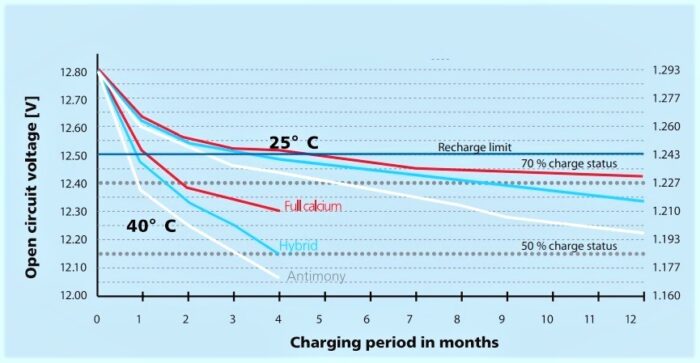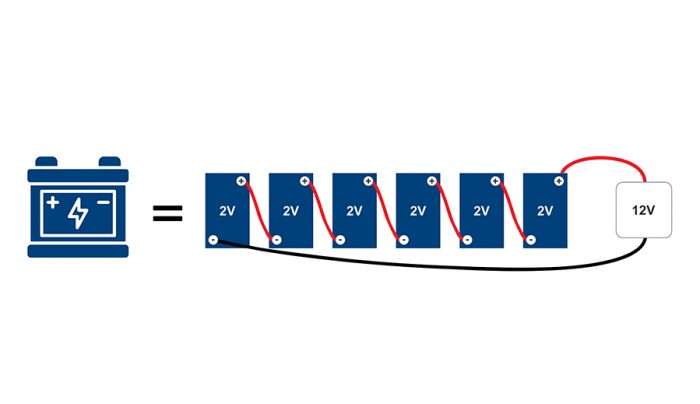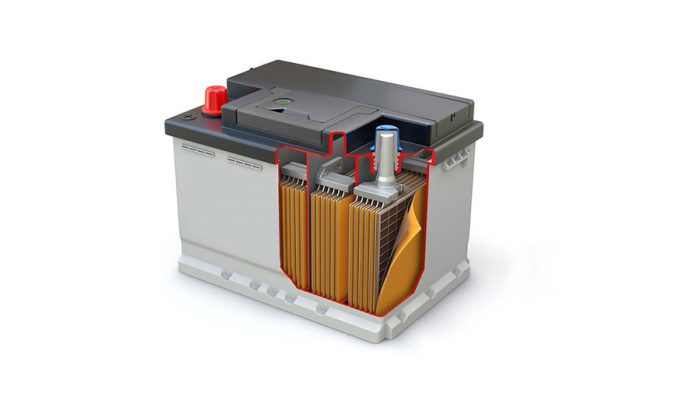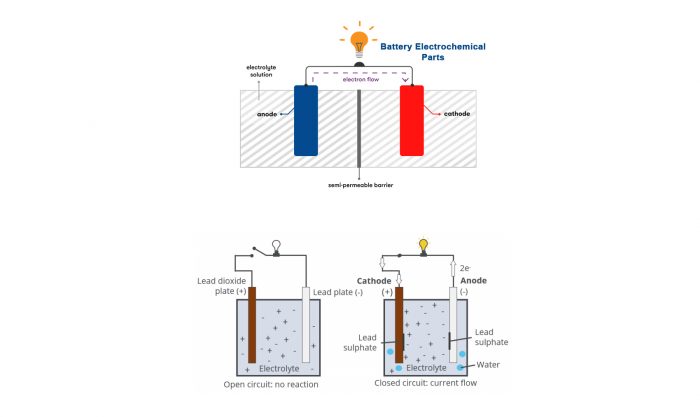Self-discharge is an event in which, battery charging level is reduced when the battery is stored open-circuit for a while. Self-discharge (losing charge) is caused by electrochemical processes which act like a small external load. If lead acid batteries being stored at normal temperature, estimated self-discharge rate is about 5% per month. This estimated rate […]
The car battery shall be marked with a code according to its specifications. This code can be Complicated and is defined based on different standards of coding. DIN Number (German Industrial Standard): 1st digit = Battery Voltage (1-2 = 6 Volt & 5-7 = 12 Volt) 2nd & 3rd digits = Nominal capacity (e.g., 560 […]
A lead alloy framework that supports the active material of lead-acid battery plates and conducts electrons from the cells. Plates have consisted of positive and negative types which are recognized by the active material they have. High temperature is the first cause of battery failure. which accelerates corrosion and growth of grids, mostly in the […]
Advantages and Disadvantages of different types of Starter Batteries (SLI / EFB / AGM) Advantages Disadvantages Reliable starting power Limited ability to power multiple accessory Acceptable charge acceptance Limited cycling capability Compatible for all climates Shorter life compared to new technologies Right price Advantages Disadvantages Longer life than SLI batteries Higher price than SLI batteries […]
A lead-acid battery separator is a microporous layer placed between the anode and cathode of a battery and is a kind of partition which separates the anode and cathode electrodes. Battery performance (energy and power densities, cycle life, and safety) is dependent on the quality and structure of electrodes of the battery and separator plays […]
Brief history of lead-acid Battery The lead-acid battery is a type of rechargeable battery which was invented in 1859 by French physicist Gaston Planté. It was the first type of rechargeable battery ever created. In Comparison with modern rechargeable batteries, lead-acid batteries have lower energy density, but the ability to supply high rate of current makes this kind […]
Main Electrical Characteristics of Battery 1- Battery Voltage Battery Voltage refers to the amount of electric potential the battery holds and is measured between the terminals of a battery. In a lead-acid battery, a cell has an open-circuit voltage of approximately 2 volts. There are six cells in a 12-volt lead-acid battery. The standard automotive […]
Structure of Lead-Acid Battery Battery container: This type of battery mainly contains sulfuric acid so the battery container must be resistant to sulfuric. Battery Acid: The acid is a high-purity solution of sulfuric acid and water. Battery Negative Plate: The negative plate contains a metal grid with spongy lead (Pb2+) active material. Battery Positive […]
Various Technologies in Starter Batteries ISO and IEC maintain terminological databases for use in standardization at the following addresses: Flooded battery (SLI flooded lead-acid battery) having a cover provided with one or more openings through which gaseous products may escape. Enhanced flooded battery (EFB flooded lead-acid battery) with additional special design features to significantly improve […]
Battery One or more electrochemical cells which electrically coupled into a single unit and equipped with external electrical connections’ attachments. In a lead-acid battery, the cell has an open-circuit voltage of approximately 2.1 volts. Six cells are linked together to make a 12-volt lead-acid battery. How does Battery operate? When two unlike materials such as […]
- 1
- 2

 العربية
العربية Русский
Русский








